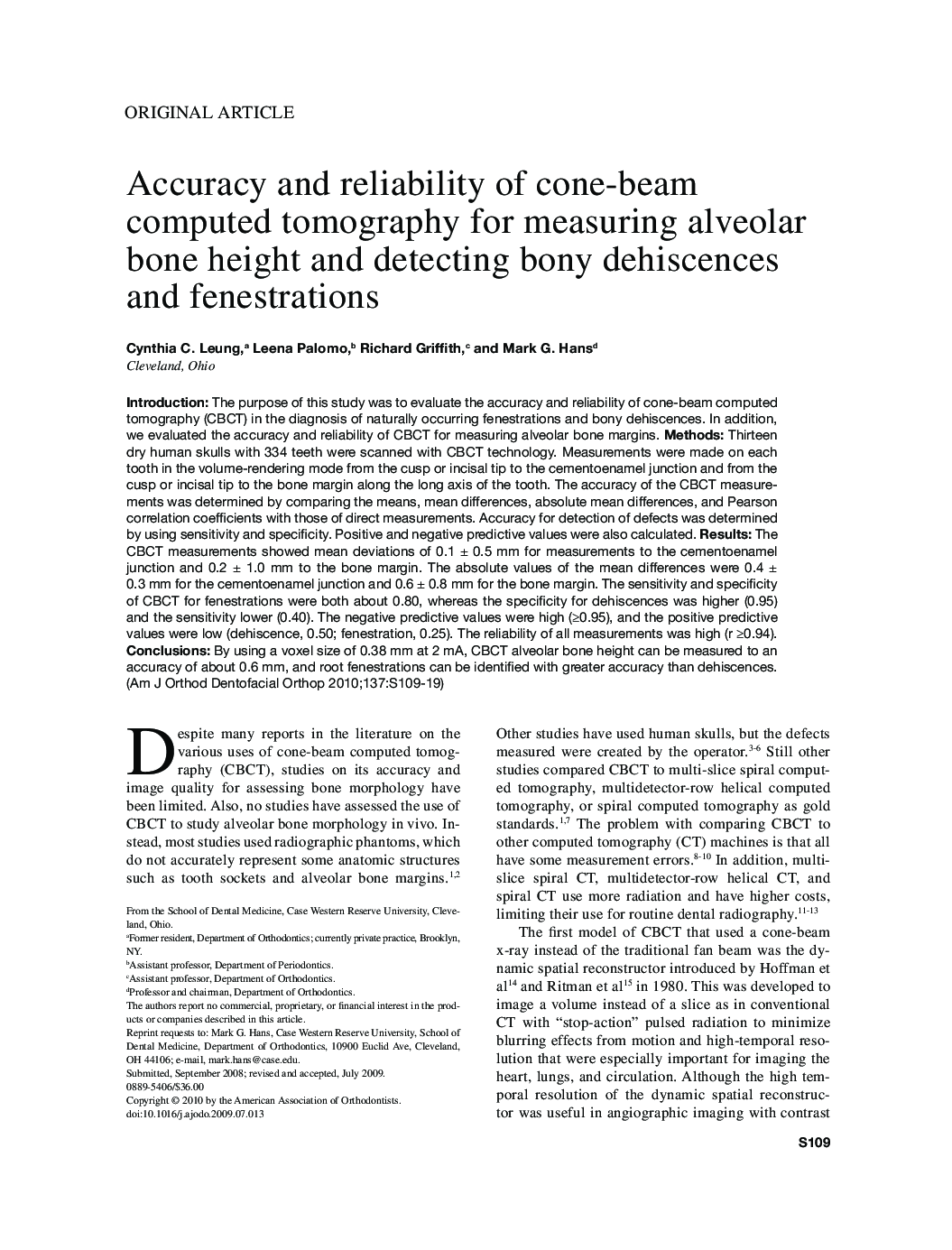| Article ID | Journal | Published Year | Pages | File Type |
|---|---|---|---|---|
| 3119629 | American Journal of Orthodontics and Dentofacial Orthopedics | 2010 | 11 Pages |
IntroductionThe purpose of this study was to evaluate the accuracy and reliability of cone-beam computed tomography (CBCT) in the diagnosis of naturally occurring fenestrations and bony dehiscences. In addition, we evaluated the accuracy and reliability of CBCT for measuring alveolar bone margins.MethodsThirteen dry human skulls with 334 teeth were scanned with CBCT technology. Measurements were made on each tooth in the volume-rendering mode from the cusp or incisal tip to the cementoenamel junction and from the cusp or incisal tip to the bone margin along the long axis of the tooth. The accuracy of the CBCT measurements was determined by comparing the means, mean differences, absolute mean differences, and Pearson correlation coefficients with those of direct measurements. Accuracy for detection of defects was determined by using sensitivity and specificity. Positive and negative predictive values were also calculated.ResultsThe CBCT measurements showed mean deviations of 0.1 ± 0.5 mm for measurements to the cementoenamel junction and 0.2 ± 1.0 mm to the bone margin. The absolute values of the mean differences were 0.4 ± 0.3 mm for the cementoenamel junction and 0.6 ± 0.8 mm for the bone margin. The sensitivity and specificity of CBCT for fenestrations were both about 0.80, whereas the specificity for dehiscences was higher (0.95) and the sensitivity lower (0.40). The negative predictive values were high (≥0.95), and the positive predictive values were low (dehiscence, 0.50; fenestration, 0.25). The reliability of all measurements was high (r ≥0.94).ConclusionsBy using a voxel size of 0.38 mm at 2 mA, CBCT alveolar bone height can be measured to an accuracy of about 0.6 mm, and root fenestrations can be identified with greater accuracy than dehiscences.
